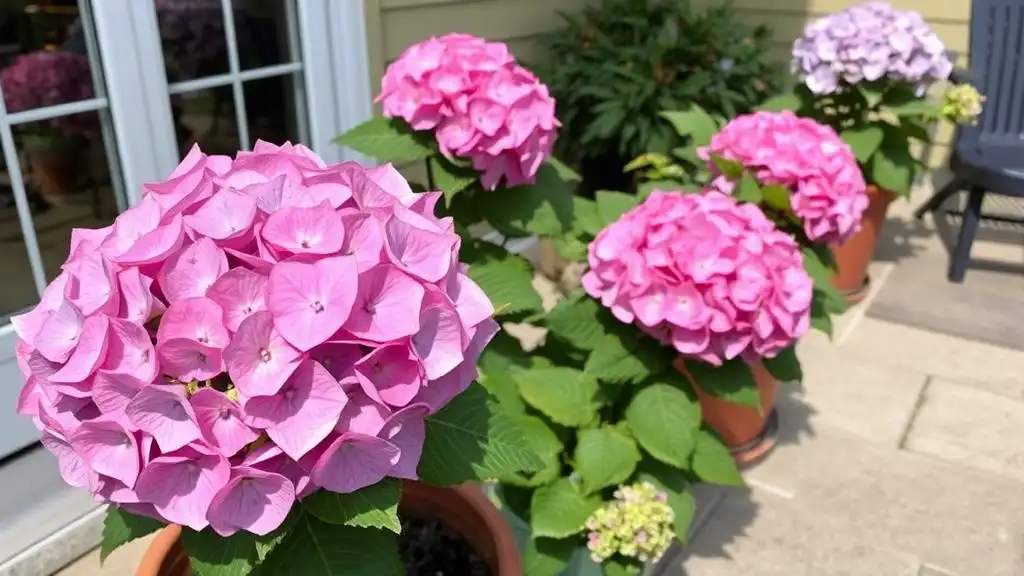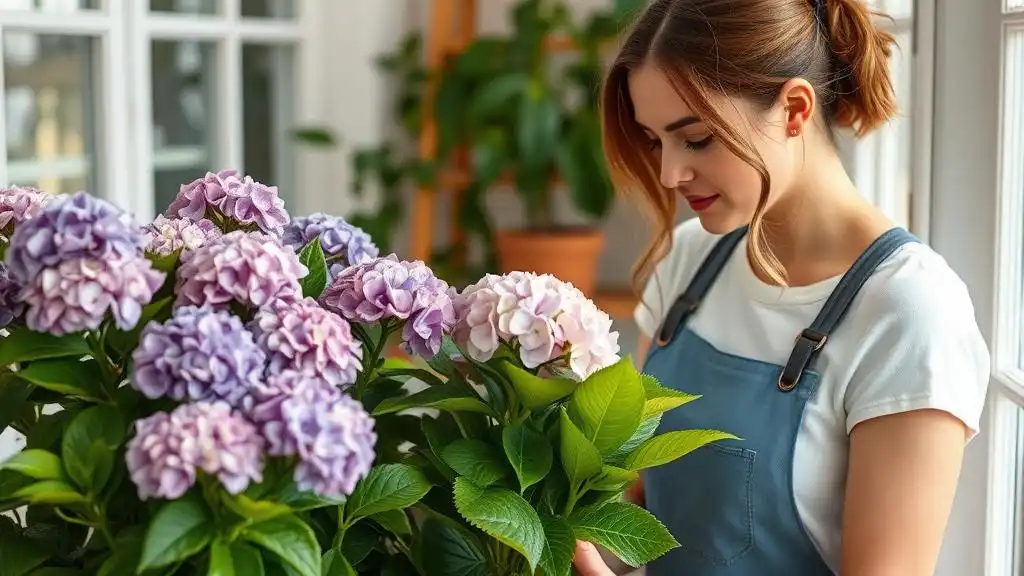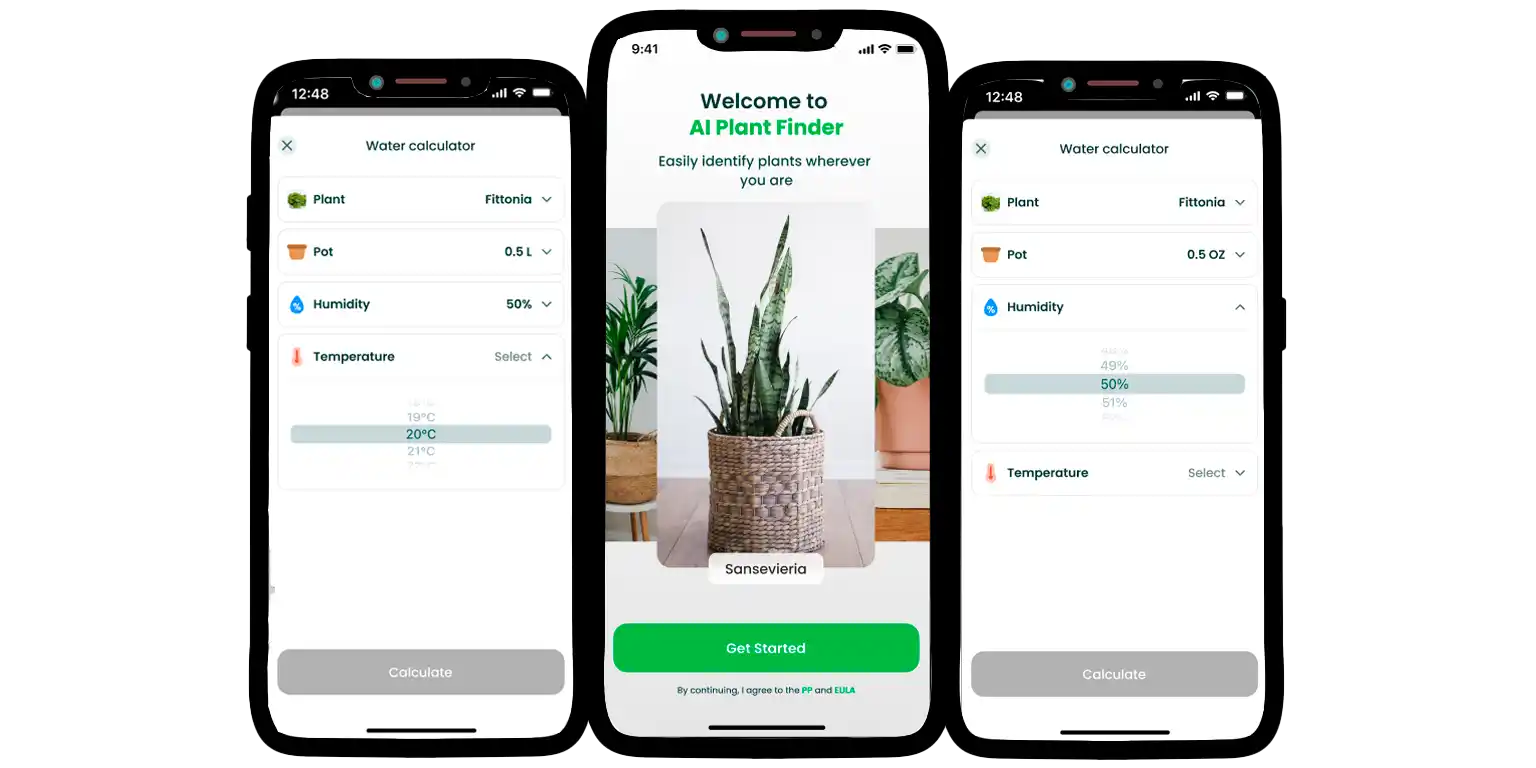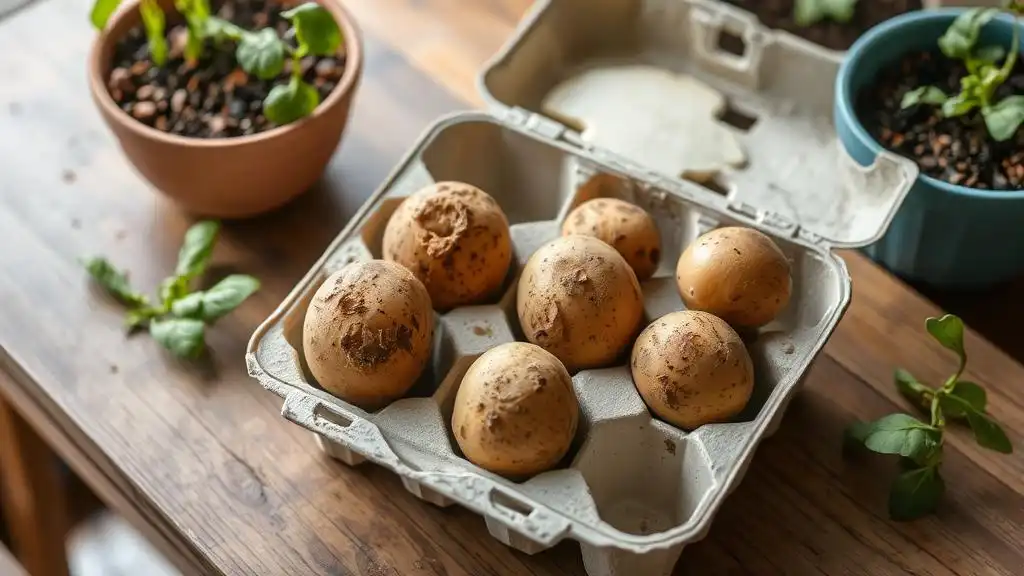Proper Ways to Fertilize Hydrangeas: Tips & Auxiliary Tools

Taking care of houseplants is a great responsibility that should never be neglected. Flowering plants of hydrangeas, however resilient and easy to grow they may seem, require special attention to their conditions and productivity. Like any other living being, hydrangeas need external sources of nutrients, i.e., fertilizers, so as to stay healthy and thrive.
Contents:
Taking care of houseplants is a great responsibility that should never be neglected. Flowering plants of hydrangeas, however resilient and easy to grow they may seem, require special attention to their conditions and productivity. Like any other living being, hydrangeas need external sources of nutrients, i.e., fertilizers, so as to stay healthy and thrive.
But what is considered a good fertilizer? When do you fertilize hydrangeas and how do you do it properly? Do not miss a chance to learn more about the most efficient fertilizers and choose your own tactics for the plant care routine.

First: What Do Hydrangeas Need in General?
Hydrangeas are the casual inhabitants of the private gardens, for they boast lush foliage and vibrant tiny flowers united into dense clusters. Achieving these consistent results definitely requires thorough preparation and understanding of the plant’s specific needs. Let us briefly cover general hydrangea requirements that may ensure that the plant lives in balance and prosperity.
Soil Requirements: Like the majority of the popular plants, hydrangeas prefer well-drained, rich in organic matter soil with a pH level between 5.5 and 6.6. By the way, the pH of the soil significantly impacts the plant’s development and the bloom color, too.
Watering Needs: Consistent moisture is an important aspect of an efficient hydrangea growth, this is why it is crucial to keep the plant hydrated through deep watering all the time. Nevertheless, one should keep in mind that overwatering may lead to root rot and trigger various plant diseases.
Lighting: In essence, most hydrangeas thrive in partial shade, while accessing sunlight during the day. Balance is the key, for too much shade or extreme exposure to direct sunlight may hinder the development of the flowers.
Temperature and Climate: Hydrangeas are known to be relatively resilient to different environments, but a mild climate with no temperature extremes provides the most appropriate conditions for plants to grow. In winter, though, it is better to use frost covers and mulch anyway.
Fertilization: The part that is often missed by amateur gardeners is plant fertilization. Regular feeding is crucial for the health of a plant and its ability to bloom excessively. But what to fertilize hydrangeas with?
Urgent Needs of Hydrangeas
Sometimes, flowers may show signs that they do not feel well. Recognizing the symptoms may help you save the plant’s health and ensure that it blooms further. What should you pay special attention to?
poor growth, leaf drop, and discoloration that indicate the imbalance or a lack of essential nutrients as a whole.
yellowing leaves that tell us about nitrogen or iron deficiency.
poor flowering that usually serves as an indicator of phosphorus deficiency.
weak stems and poor structural integrity that are usually associated with a lack of potassium.
Next: Fertilization Type Matters
Through the years of agricultural development, there appeared various types and forms of fertilizers that may offer benefits when properly utilized and correctly selected. Most people may be wondering “What is a good fertilizer for hydrangeas?”, and the answer lies in the knowledge of the fertilization specifics, namely their composition, formulas, and speed of action.

Inorganic vs. Organic Fertilizers
The gap between organic and inorganic fertilizers is relatively broad, for they employ different mechanisms and tools to boost soil quality. While inorganic fertilizers produced in the special laboratories always demonstrate a well-balanced mix of nutrients that lead to predictable results, organic fertilizers include compost, fish emulsion, aged manure, and the like.
Hence, the concentration of nutrient content may be lower in the organic choice rather than the inorganic one, which is not really environmentally friendly.
Fertilizer Formulas
The most popular states of aggregation, appropriate for such a process, include granular and liquid fertilizers, as well as fertilizer spikes. The latter, for example, refers to the easiest approach, for these premeasured formations should be put directly into the soil closer to the roots to release agents consistently. Nevertheless, each type may be equally effective, though the choice should be made according to the particular case, not general characteristics.
Slow-Release vs. Fast-Release vs. Controlled-Release Fertilizers
When one questions when you should fertilize hydrangeas, it is important to pay attention to the duration needed for a fertilizer to work efficiently. Essentially, there are several types of fertilizers that act completely differently.
Slow-release fertilizers gradually release nutrients over an extended period of time, which is ideal for those who care about their plants but do not have enough time to do it very often. It is to be used once or twice per season, which depends on the concentration and the plant’s demands.
Fast-release fertilizers, in turn, deliver nutrients quickly and provide a plant with the necessary elements in an instant. However, this option could be damaging sometimes, when one does not stick to the guidelines but applies as much fertilizer as they wish and causes nutrient burn.
Controlled-release fertilizers, usually presented in the granular form, are designed to release nutrients when the soil truly needs them, which provides a good balance between the convenience of slow-release and the immediate effect of the fast-release options.
The most appropriate seasons to utilize fertilizers are early spring and early summer. Remember that applying fertilizers should be stopped in mid-August and never be thought of during winter. To promote the plant’s development and successful growth, follow the recommendations provided by the product team. This is how you can achieve your goal and create the garden of your dreams.

What Is the Best Fertilizer for Hydrangea?
Finding what is a good fertilizer for hydrangeas is a complex process, for each type of flower incorporated into different environmental conditions requires different support. All in all, professional gardeners note that there might be universal solutions that work equally well for various hydrangea species.
The most universal option would be an organic, slow-release fertilizer of 10-10-10 or 14-14-14 formulas, which means it should have equal parts of nitrogen, phosphorus, and potassium respectively. These fertilizers are perfect for the general maintenance of the plant’s health, but nothing more.
Those who want to focus on the particular aspects of the plant may opt for fertilizers with different proportions. To promote flower development, for example, one may utilize fertilizers with a richer phosphorus content, like 10-20-10. If one wishes to gradually increase the size of the blooms, it might be beneficial to try the 15-10-10 or 10-5-5 formulas with a high content of nitrogen.
Let’s Get It Planted: AI Plant Finder for Smooth Gardening
We understand that gardening and such a routine may be sometimes boring or, at least, complicated. Who would not feel disheartened by the inability to choose how to fertilize hydrangea without hurting a plant? To make this process less tangled, here come digital tools like AI Plant Finder to assist you with the issues of planting needs.
Been wondering what plants may be grown in your climate? Or want to know how to prune shrubs and flowers the right way? All the questions that haunt you in the garden may be answered with a click. The app does not intend to overwhelm you, for it incorporates the most useful features for gardeners of all levels and ages.
Explore the World of Flora: To provide one with the most relevant and detailed information about the plants, the AI Plant Finder’s team has collected data about more than 400,000 species. Learn about the toxicity of each plant, discover what they need to grow, and much more.
Scan Plants: Have you ever wondered how it is possible for a plant search to be so quick and easy? To identify a plant, simply open the AI Plant Finder app, tap the camera icon on the tab bar, and snap a picture of the plant.
Identify Diseases: Besides, you are also welcome to detect plant diseases via photos and explore some treatment plans, too. So as to make this even more accurate, take several pictures and select those that clearly show the external symptoms of the disease.
Keep Track of Your Garden: Make sure you do not forget anything about your plants. Record information about your garden right in the app for you not to miss important procedures.
Set Up Plant Care Reminders: For each plant displayed in the “My Garden”, one may set up reminders for rotating, watering, misting, etc. “A happy and well-informed plant enthusiast” means “a healthy and blooming garden”.

Hydrangea is a regular plant that may be whimsical, and so may we. To meet the expectations and needs of both sides, the industry revealed a lot of accomplished apps, and AI Plant Finder is one of them. The process of fertilizing hydrangeas, supported by a fine digital tool, is a great combination of forces, that makes the world a healthy and joyful garden.
Share:
Read More
Identify Any Plant, Diagnose Every Disease
Download Our App Now!


